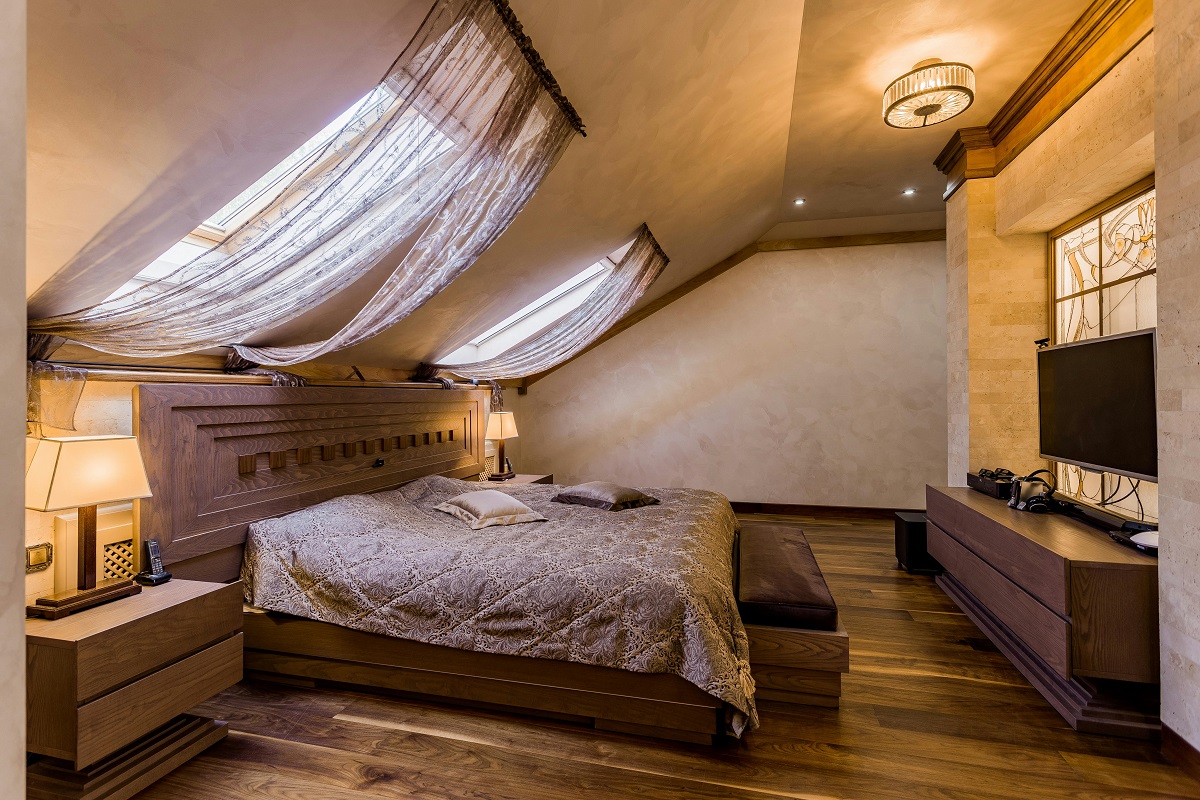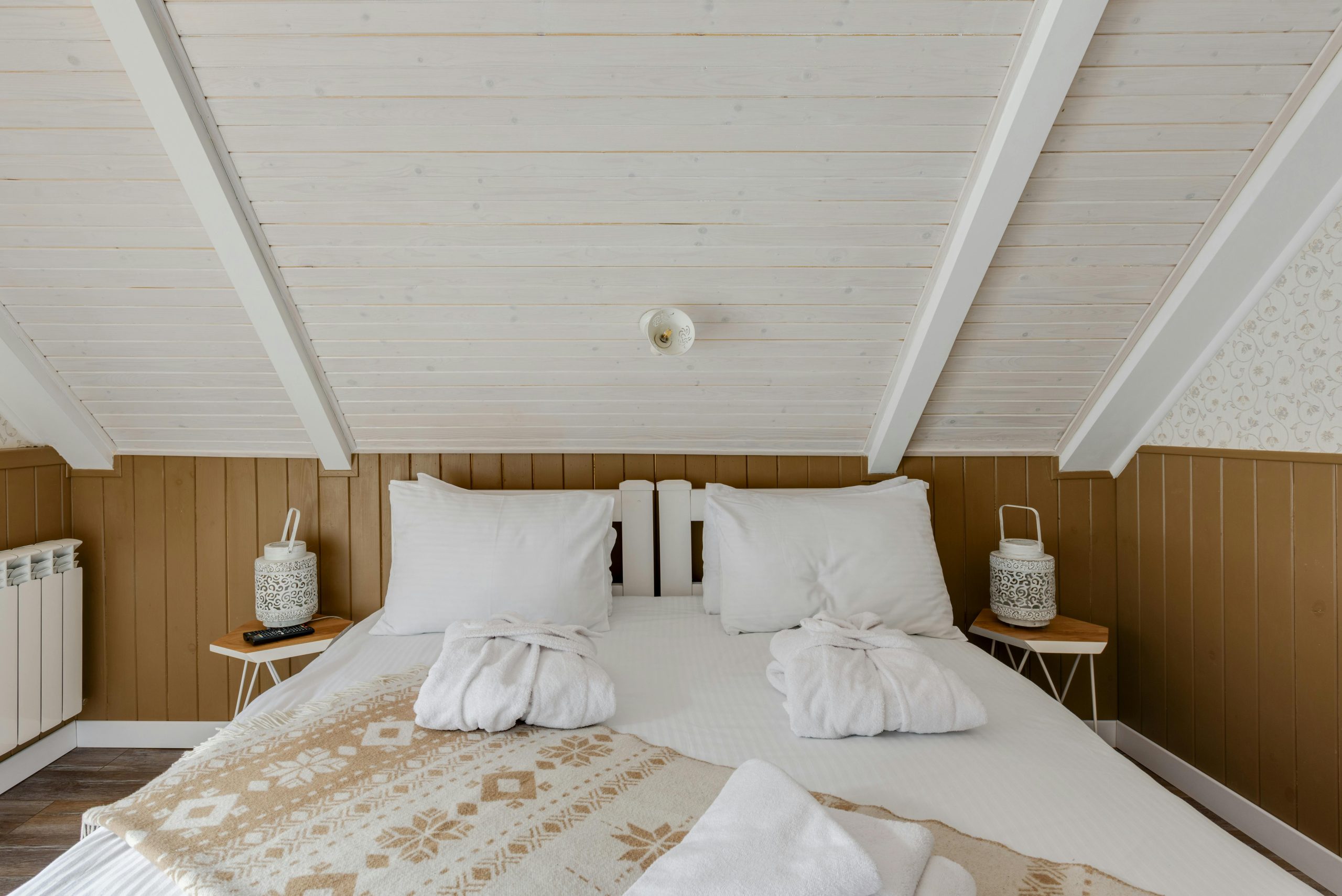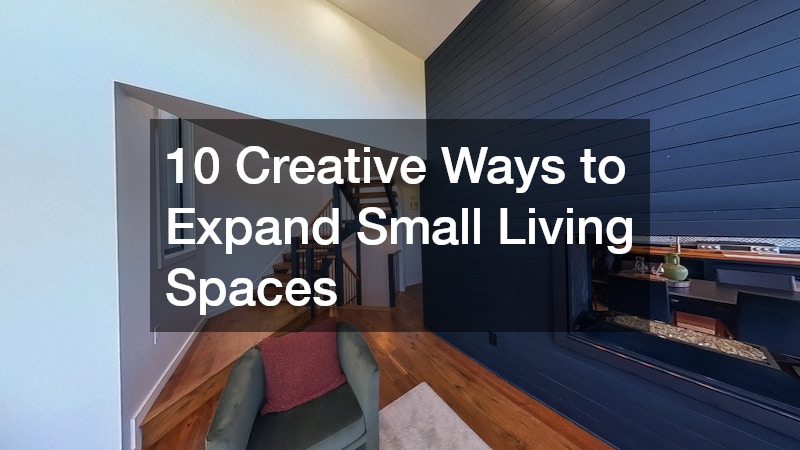- Plan your layout carefully: Sloped ceilings and irregular shapes make thoughtful furniture placement essential for a comfortable and functional attic bedroom.
- Maximize floor space: Use low-profile, floating, and multi-functional furniture to keep the room open and uncluttered.
- Choose space-saving beds: Platform beds with storage, loft beds, or Murphy beds can free up valuable floor area and add functionality.
- Utilize clever storage solutions: Built-in cabinets, under-bed storage, vertical shelving, and hidden compartments help keep belongings organized.
- Optimize light and airiness: Light color palettes, minimal decor, mirrors, and consistent flooring make small attics feel more open.
- Create multifunctional zones: Zoning with rugs, foldable furniture, and proper lighting allows the attic to serve as sleeping, study, or relaxation areas.
- Use awkward nooks effectively: Turn corners and small spaces into reading areas, mini offices, or built-in storage to make the most of every inch.
Turning an attic into a bedroom is one of the best ways to maximize your home’s space. However, attic bedrooms come with unique challenges such as sloped ceilings, limited floor space, and awkward corners. With the right layout strategies, you can create a comfortable, stylish, and functional attic bedroom that feels much larger than it actually is. Here are 10 practical attic bedroom layout tips to help you optimize small spaces.
Why Is Layout Important for an Attic Bedroom?
Unlike standard rooms, attic bedrooms are often irregularly shaped, with slanted ceilings and limited natural light. A poor layout can make the space feel cramped and uncomfortable. When exploring different attic room ideas, planning your layout carefully ensures that every inch of the room is used efficiently, creating a space that’s both cozy and practical.
1. Maximize Floor Space in Your Attic Bedroom

Maximizing floor space is essential in a small attic bedroom. Consider these strategies:
- Use Low-Profile Furniture: Beds, dressers, and desks that sit lower to the ground make the room feel more open. Low-profile furniture also prevents the ceiling from feeling oppressive in sloped areas.
- Floating Furniture: Floating shelves, wall-mounted desks, and nightstands free up floor space and reduce visual clutter. These pieces make the room feel more spacious without sacrificing storage or functionality.
- Avoid Large Bulky Pieces: Stick to essential furniture and multi-functional items. Large armoires or oversized chairs can dominate a small attic bedroom, leaving little room to move around comfortably.
Extra Tip: Consider furniture with dual functions, such as a bench with storage or a desk that doubles as a vanity, to further optimize your floor space.
2. Choose the Best Bed Option for Small Attic Bedrooms
The bed is the centerpiece of any bedroom, but in an attic, choosing the right bed is crucial. Some space-saving options include:
- Platform Beds with Storage: Utilize drawers or compartments underneath for clothes, books, or linens. This eliminates the need for additional storage furniture.
- Loft Beds: Loft beds are perfect for kids or multifunctional spaces, allowing for a desk, seating area, or storage underneath.
- Murphy Beds: Foldable wall beds can transform your attic bedroom into a multi-purpose room, opening up floor space during the day.
Extra Tip: Measure your ceiling height carefully before choosing a loft or Murphy bed to ensure safe and comfortable use.
3. Arrange Furniture Around Sloped Ceilings
Sloped ceilings can be tricky, but they also add character to your attic bedroom. Here’s how to work with them:
- Place Lower Furniture Under Slopes: Beds, benches, or seating areas work well under slanted sections, preventing head bumps and making efficient use of the space.
- Use Taller Furniture on Full-Height Walls: Keep wardrobes, bookshelves, or tall cabinets against walls with full ceiling height to maintain accessibility.
- Consider Built-In Storage: Custom-built drawers, cabinets, or shelving along slanted walls create a seamless look while utilizing otherwise awkward areas.
Extra Tip: Use the sloped areas for decorative elements like low lighting, plants, or artwork to make the space feel intentional and cozy.
4. Use Mirrors to Make a Small Attic Bedroom Feel Bigger
Mirrors are one of the easiest ways to visually expand a space. Consider:
- Wall-Mounted Mirrors: Place mirrors opposite windows to reflect natural light and create a sense of depth.
- Mirrored Wardrobe Doors: A practical solution that doubles as storage while making the room appear larger.
- Multiple Small Mirrors: Cluster small mirrors as wall art for a stylish effect that also tricks the eye into perceiving more space.
Extra Tip: Lean a large mirror against a wall instead of hanging it to save drilling and create a casual, modern vibe.
5. Optimize Storage
Storage is often the biggest challenge in attic bedrooms, but clever solutions can make a huge difference:
- Built-In Cabinets: Custom cabinetry fits perfectly under eaves and sloped walls, using areas that would otherwise be wasted.
- Under-Bed Storage: Rolling drawers, bins, or baskets can store seasonal clothing or extra bedding efficiently.
- Vertical Shelving: Tall shelves or wall-mounted storage units make use of vertical space without encroaching on the floor area.
- Hidden Storage: Ottomans, benches, and window seats with compartments provide functional storage while keeping the room tidy.
Extra Tip: Consider furniture that doubles as storage, such as a bed with built-in drawers, to minimize clutter.
6. Choose the Best Layout for Multiple Functions
Attic bedrooms often serve multiple purposes, such as a sleeping area, study, or relaxation zone. Consider these layout tips:
- Zoning: Use rugs, furniture placement, or screens to define separate areas for sleeping, working, or lounging.
- Foldable Furniture: Desks, tables, or chairs that fold away save valuable floor space when not in use.
- Light and Airflow: Ensure each functional zone has access to natural light or task lighting to prevent the room from feeling cramped.
Extra Tip: Keep circulation paths clear so that moving between zones feels natural and unobstructed.
7. Make a Small Attic Bedroom Feel Open and Airy

Even a small attic bedroom can feel spacious with the right design choices:
- Light Color Palette: Whites, pastels, and neutral tones reflect light and create a sense of openness.
- Minimal Decor: Keep surfaces clean and avoid overcrowding with knick-knacks or unnecessary items.
- Open Window Treatments: Sheer curtains or blinds allow natural light in while maintaining privacy.
- Consistent Flooring: Using the same flooring throughout the room creates continuity and makes the space feel larger.
Extra Tip: Mirrors, glass furniture, and reflective surfaces can also enhance the airy feel of your attic bedroom.
8. Lighting Is Key
Lighting plays a huge role in attic bedrooms with limited natural light:
- Layered Lighting: Combine ceiling lights, wall sconces, and table lamps to create a balanced and inviting glow.
- LED Strip Lighting: Highlight shelves, sloped ceilings, or work areas without taking up floor space.
- Task Lighting: Ensure reading nooks, desks, or vanity areas have sufficient illumination to remain functional.
Extra Tip: Consider dimmable lights to adjust the ambiance based on the time of day or activity.
9. Creative Decor for Small Attic Bedrooms
Decor can enhance the feeling of space while reflecting your style:
- Use Vertical Patterns: Striped wallpaper or vertical art draws the eye upward, giving the illusion of higher ceilings.
- Add Textures: Rugs, throws, cushions, and bedding add warmth and visual interest without cluttering the space.
- Floating Nightstands: Wall-mounted bedside tables save floor space while maintaining functionality.
- Low Seating Options: Bean bags, floor cushions, or poufs provide casual seating without taking up much room.
Extra Tip: Keep decor proportional to the room’s scale; oversized art or furniture can make a small attic feel even smaller.
10. Keep Your Attic Bedroom Organized
Organization is key to preventing a small space from feeling chaotic:
- Declutter Regularly: Only keep items you use frequently to maintain a clean and functional space.
- Storage Bins and Baskets: Categorize belongings for easy access and neatness.
- Hooks and Pegboards: Hang bags, hats, or accessories to free up drawer and floor space.
- Seasonal Rotation: Store off-season clothing elsewhere to keep the room functional year-round.
Extra Tip: Label storage bins and keep frequently used items at eye level or in accessible areas to maintain organization easily.
Bonus Tip: Make Use of the Nooks
Attic bedrooms often have awkward nooks that feel unusable. Instead:
- Create reading corners with a small chair and lamp.
- Install built-in bookshelves or cabinets.
- Use the space for a mini home office or craft area.
Final Thoughts
Optimizing a small attic bedroom requires a combination of smart layout, multifunctional furniture, and clever storage solutions. By carefully considering the placement of furniture, the use of vertical and hidden storage, and the flow of light, you can transform even the tiniest attic into a comfortable and stylish retreat. Small spaces can feel expansive with thoughtful design, making your attic bedroom a functional and inviting sanctuary in your home.

